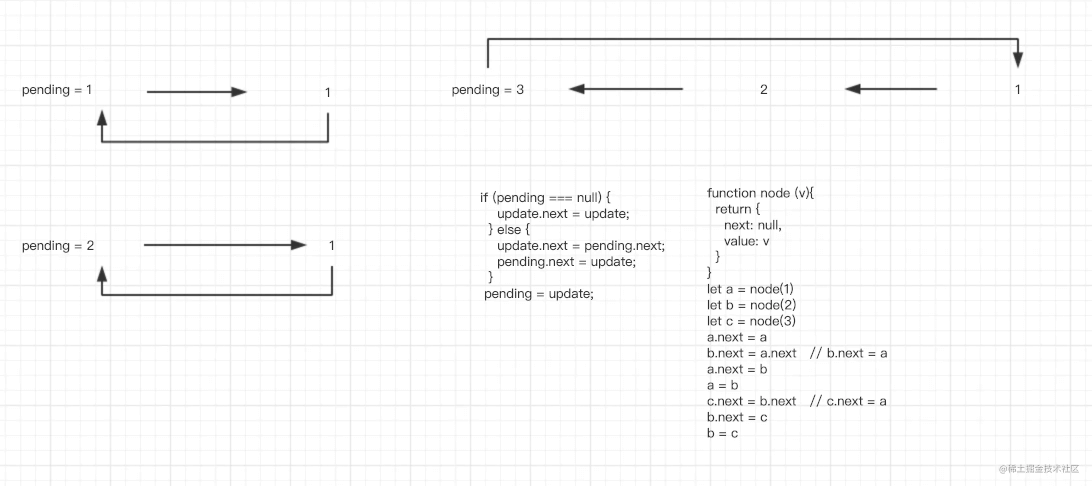前言
1 为什么选用svg 而不是cavans?
因为cavans 在高分辨率屏幕下,需要根据 devicePixelRatio做宽高的适配,不然就会很模糊,而
前言
1.为什么选用svg 而不是cavans?
因为cavans 在高分辨率屏幕下,需要根据 devicePixelRatio做宽高的适配,不然就会很模糊,而svg是矢量图,原生支持各种分辨率,不会产生模糊的情况。
1.使用示例
import React from 'react'
import ReactDOM from 'react-dom'
import './index.css'
import WaterMarkContent from './components/WaterMarkContent'
import App from './App'
ReactDOM.render(
<React.StrictMode>
<WaterMarkContent>
<App />
</WaterMarkContent>
</React.StrictMode>,
document.getElementById('root')
)

2.实现过程
- 构造一个水印图
- 将水印图铺满整个容器
- 水印组件:支持子组件内容插槽
构造一个svg 的水印图
const { text = 'waterMark', fontSize = 16, fillOpacity = '0.2', fillColor = '#000' } = props
const res = `
<svg xmlns="http://www.w3.org/2000/svg" xmlns:xlink="http://www.w3.org/1999/xlink" width="180px" height="180px" viewBox="0 0 180 180">
<text x="-100" y="-30" fill='${fillColor}' transform = "rotate(-35 220 -220)" fill-opacity='${fillOpacity}' font-size='${fontSize}'> ${text}</text>
</svg>`
由上面的代码,我们可以得到一个svg xml 的字符串,接下来我们将它变成url 资源
const blob = new Blob([res], {
type: 'image/svg+xml',
})
const url = URL.createObjectURL(blob)
由此,我们就得到了一个svg 的资源地址,现在我们将它用于div 的背景图当中
<div
style={{
position: 'absolute',
width: '100%',
height: '100%',
backgroundImage: `url(${url})`,
top: 0,
left: 0,
zIndex: 999,
pointerEvents: 'none', //点击穿透
}}
></div>
至此,我们很轻松的得到了一个铺满水印的div,下面我们将代码整合,并封装成组件。
3.组件代码
import React from 'react'
import { ReactNode, useMemo } from 'react'
type svgPropsType = {
text?: string
fontSize?: number
fillOpacity?: number
fillColor?: string
}
const SvgTextBg = (props: svgPropsType) => {
const { text = 'waterMark', fontSize = 16, fillOpacity = '0.2', fillColor = '#000' } = props
const res = `
<svg xmlns="http://www.w3.org/2000/svg" xmlns:xlink="http://www.w3.org/1999/xlink" width="180px" height="180px" viewBox="0 0 180 180">
<text x="-100" y="-30" fill='${fillColor}' transform = "rotate(-35 220 -220)" fill-opacity='${fillOpacity}' font-size='${fontSize}'> ${text}</text>
</svg>`
const blob = new Blob([res], {
type: 'image/svg+xml',
})
const url = URL.createObjectURL(blob)
return (
<div
style={{
position: 'absolute',
width: '100%',
height: '100%',
backgroundImage: `url(${url})`,
top: 0,
left: 0,
zIndex: 999,
pointerEvents: 'none', //点击穿透
}}
></div>
)
}
type propsType = {
children?: ReactNode
} & Partial<svgPropsType>
const WaterMarkContent = (props: propsType) => {
const { text, fontSize, fillOpacity, fillColor } = props
const memoInfo = useMemo(
() => ({
text,
fontSize,
fillOpacity,
fillColor,
}),
[text, fontSize, fillOpacity, fillColor]
)
return (
<div style={{ position: 'relative', width: '100%', height: ' 100%' }}>
{props.children}
<SvgTextBg {...memoInfo} />
</div>
)
}
export default WaterMarkContent
总结
到此这篇关于react实现页面水印效果的文章就介绍到这了,更多相关react实现页面水印内容请搜索好代码网以前的文章或继续浏览下面的相关文章希望大家以后多多支持好代码网!



